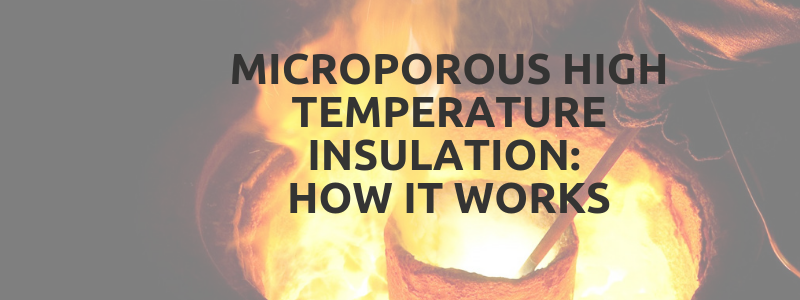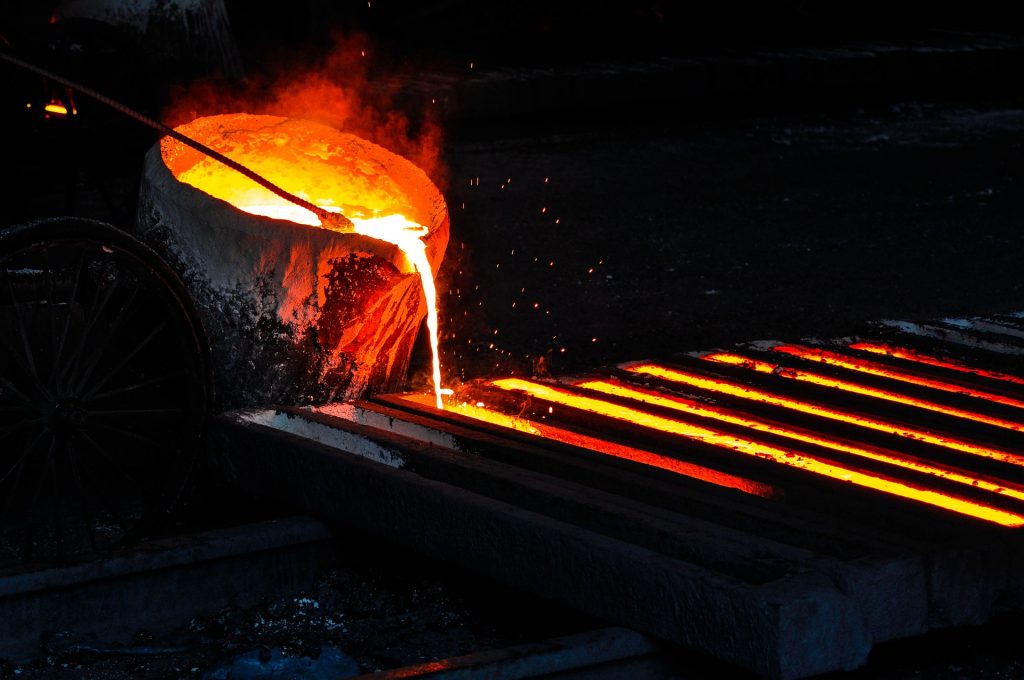
Microporous high temperature insulation is based on microporous technology, which uses the separation of tiny particles as a highly effective form of thermal management.
Elmelin’s range of Elmtherm high temperature insulation material is widely used across various industrial sectors. These include the foundry and steel industry and the petrochemical, cement and glass industries.
There are other uses of microporous technology, which many people will find familiar. For example, microporous membranes are used in sports and leisure and outdoor clothing, in the form of breathable, waterproof fabrics.
What microporous technology does is help prevent heat transfer, by controlling thermal conductivity.
How Heat Transfer Occurs
Heat transfer occurs when thermal energy moves from one thing to another thing, which has a different temperature. Heat travels in this way in three ways:
Conduction, convection and radiation.
If there is a temperature difference between two systems, heat will find a way to transfer from the higher to the lower system.
- Conduction is the transfer of heat between two substances in direct contact. If you burn your hand on a hot stove, that is a form of conduction heat transfer, or when you cool your burnt hand down with some ice.
- Convection transfers heat on currents, where hot air rises, cools and falls. Boiling a pan of water is an example of convection heat transfer. The heat transfers from the stove to the pan. Then the hot water rises while the cooler liquid moves down replacing it, causing the familiar, circular motion of boiling water.
- Radiation is the heat transmitted without direct contact, from a source to an object, such as the heat you feel from the sun, or from a fire.
Thermal conductivity is the amount a given material is able to transfer heat. Not all materials transfer heat to the same degree.
The lower a material’s thermal conductivity, the more resistant it is to the transmission of heat.
Any material used in high temperature insulation must, therefore, have a low value of thermal conductivity if it is going to be effective at high temperatures.

Microporous Technology and Thermal Conductivity
The aim for a high temperature insulation material is to have a thermal conductivity that stays very low over a wide range of temperatures. The advantage microporous materials have over other insulation materials is having wide-ranging thermal conductivity.
Some microporous insulation materials can withstand heats of up to 1600°C, while also still performing exceptionally well when temperatures drop to very low, cryogenic levels.
The principle behind microporous technology involves limiting the three processes of heat transfer – conduction, convection and radiation – which then contains the heat source and protects the subject material.
This limiting action involves separation technology and the use of small particles of silica.
Microporous Principles
The small particles of silica which make up our microporous high temperature insulation materials are so small that they have very restricted contact with each other.
Because of this restricted contact, the thermal pathways in microporous materials are limited.
In other materials, there is solid conduction, where closely packed molecules transfer heat energy between them by vibrating in reaction to being heated up. This transfer rate is related to the mass of a material, therefore the greater the mass, the higher the conduction will be.
The length of the conduction path is proportional to the rate of conduction.
In microporous high temperature insulation materials, these conduction paths are far from direct, because of the distance between molecules. These longer conduction paths decreases the rate at which heat can flow via solid conduction.
Microporous technology also impedes gaseous conduction, where gas molecules normally then start to collide and transfer their kinetic energy.
This is down to the density of microporous material. This density is such that it restricts the movement of gas molecules. This is because the voids in the material (the spaces between molecules) are smaller than the free paths of the molecules.
The result is that the gas molecules cannot transfer heat energy.
However, microporous materials also work to restrict the other forms of heat transfer, convection and radiation.
Restricting Convection and Radiation
Convection heat transfer occurs as a gas or fluid expands when heated. However, with microporous insulation material, the air molecules are unable to flow within the microporous structure.
This prevents the microporous material acting as an intermediary to allow convection of surrounding air, because the material itself is made up of around 95% air.
In radiation heat transfer, objects absorb and emit thermal radiation, also known as infrared radiation.
Unlike the other two heat transfer processes, there are no particles involved, and some surfaces will absorb infrared radiation better than others.
As one of its base ingredients, microporous material such as Elmtherm has thermally stable opacifier particles, in the core makeup of the material. These opacifiers scatter a very high proportion of the infrared radiation, reducing its transmission to low levels.
Could You Benefit from Microporous High Temperature Insulation?
We specialise in high temperature insulation solutions across a range of industries. For more information, please call us on +44 20 8520 2248, or email sales@elmelin.com. You can also complete our enquiry form and we’ll get back to you as soon as possible.
